Continued from Part 1, where we meet Dr. Adeljean Ho and discover the foundation of his vivarium hobby.
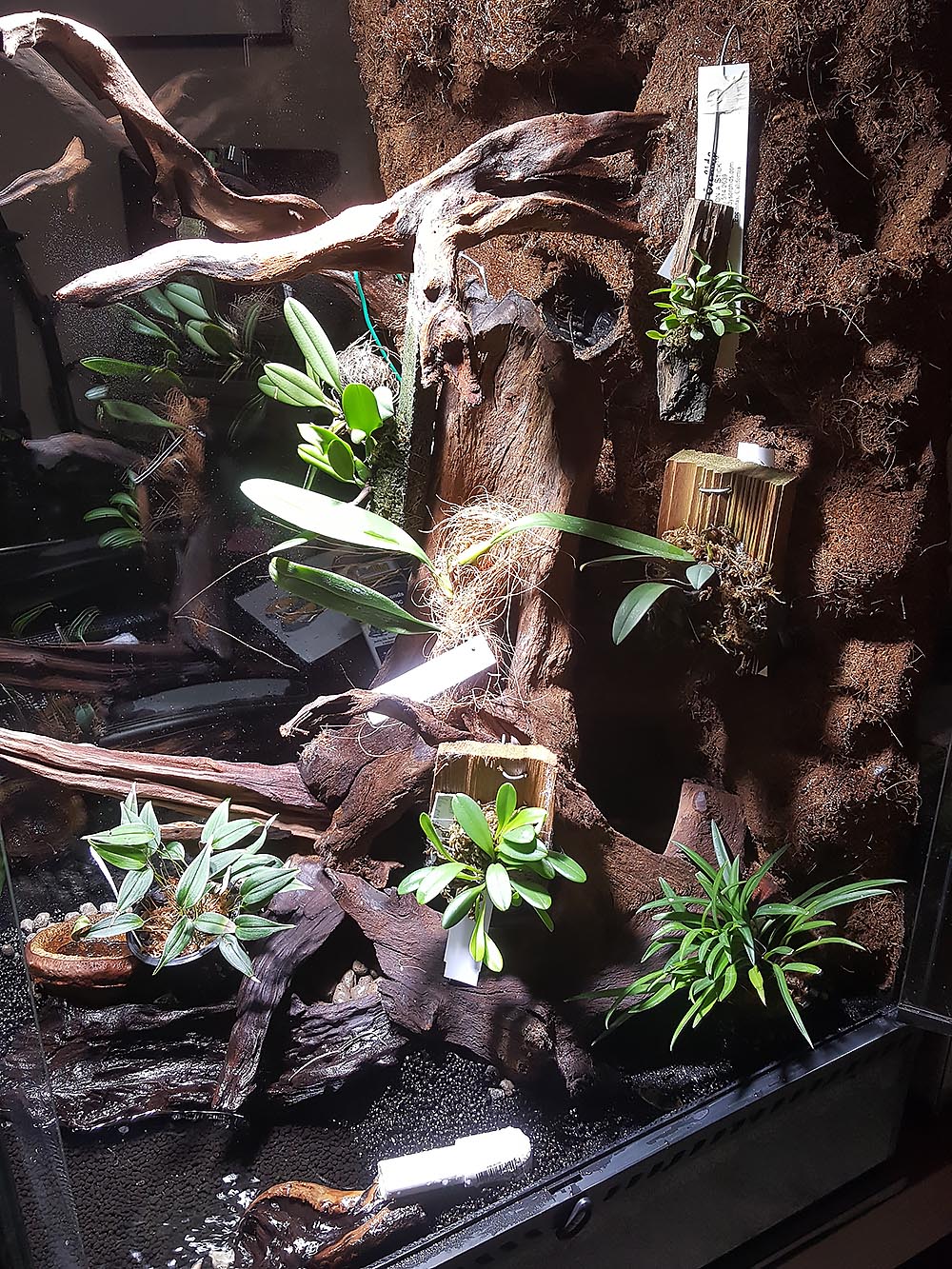
The vivarium receives its first plants: orchids still mounted as they arrived, acclimating to life in the vivarium before being selected for more permanent mounting.
MP: OK, since the orchids drive so much of this, tell me about the orchids you selected and keep.
AH: In terms of orchids, I now have over 200 in my personal collection. My tastes are split 50/50 between more mainstream types like Cattleyas and Brassavola hybrids, but I’m also into the more niche minis. I don’t mean like a 12″ Cattleya that we call a mini, but things on the centimeter scale…that’s what I gravitate to. On top of that, there are no AOS [American Orchid Society] definitions for what constitutes a mini, but people tend to say anything under 6″ including the bulb and leaf is mini.
The vivarium houses Specklinia; it’s more generally known and used to be called Pleurothallis grobyi. [Dr. Ho obtained this plant from Andy’s Orchids, a popular online and mail-order source for miniature, vivarium-appropriate orchids.] I’ve found this plant alternates between blooming in bursts and periods of vegetative growth.
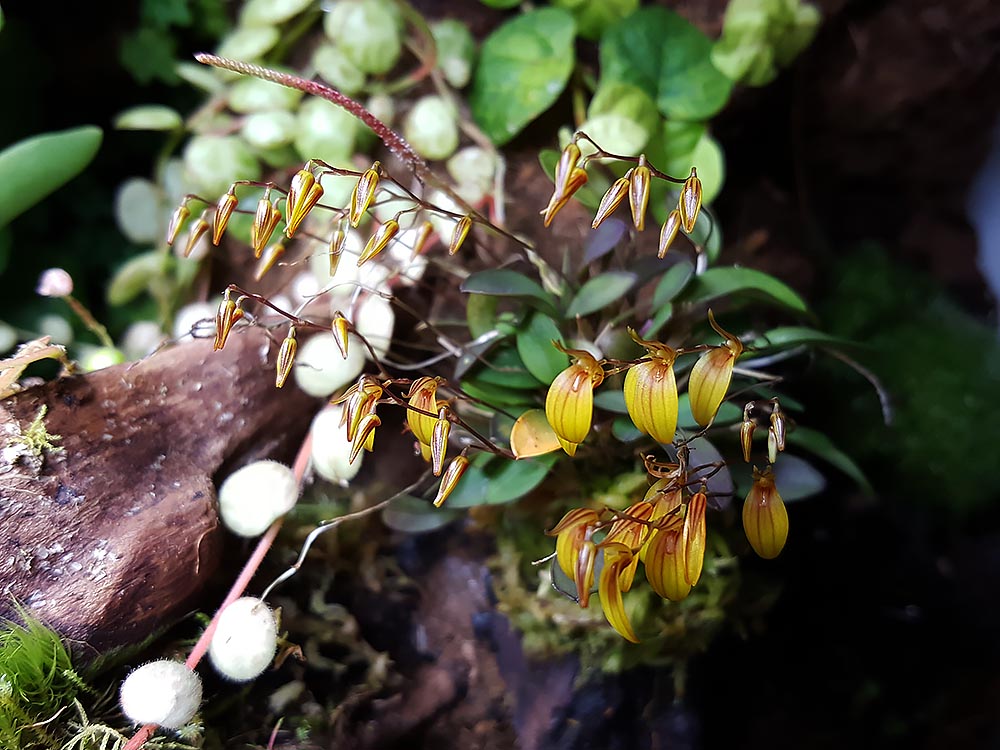
An amazing display of blossoms on this Specklinia grobyi, a staple orchid well-suited to dart frog vivarium conditions.
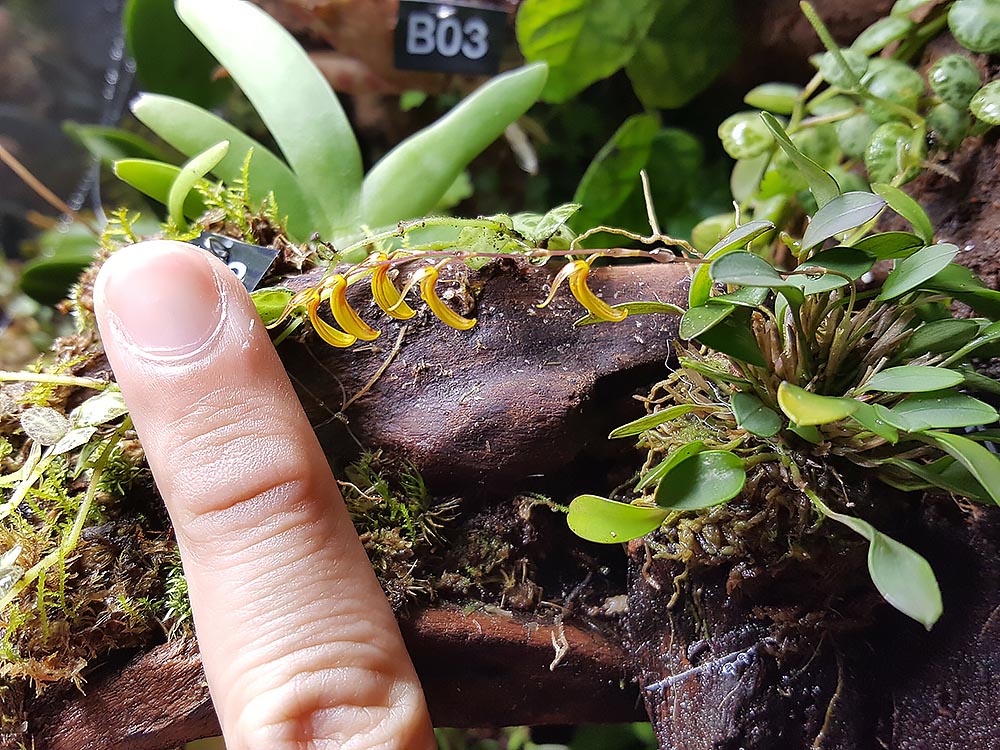
And now some perspective and a better sense of scale when it comes to what Dr. Ho considers miniature. Again, Specklinia grobyi.
I’m really into Masdevallias because they’re hard to do here in Florida. They require high humidity but cool temps. When Florida is cold in the winter, our humidity goes away with it so we can’t easily replicate the cloud forest. I’ve selected some of the warmer growing ones for the vivarium, using the misting and fogging system to counteract the heat from the lights.
I use the vivariums as a staging ground for warmth-tolerant stock. I happen to be working on a new Masdevallia hybrid between two that are warm-growing and warmth-tolerant, hoping that the offspring will be much more tolerant still. In my vivariums, I feel like the Masdevallias are always in bloom.
Lepanthes, I don’t care for them as much, but I do have Lepanthes telipogoniflora; essentially, the flower is three to four times larger than the leaf. When it’s in bloom, it looks amazing.
These orchids aside, the vivarium is dominated by Bulbophyllum; there are seven individuals in there right now. I’ve found my Bulbophyllum are the most reliable bloomers in the system.
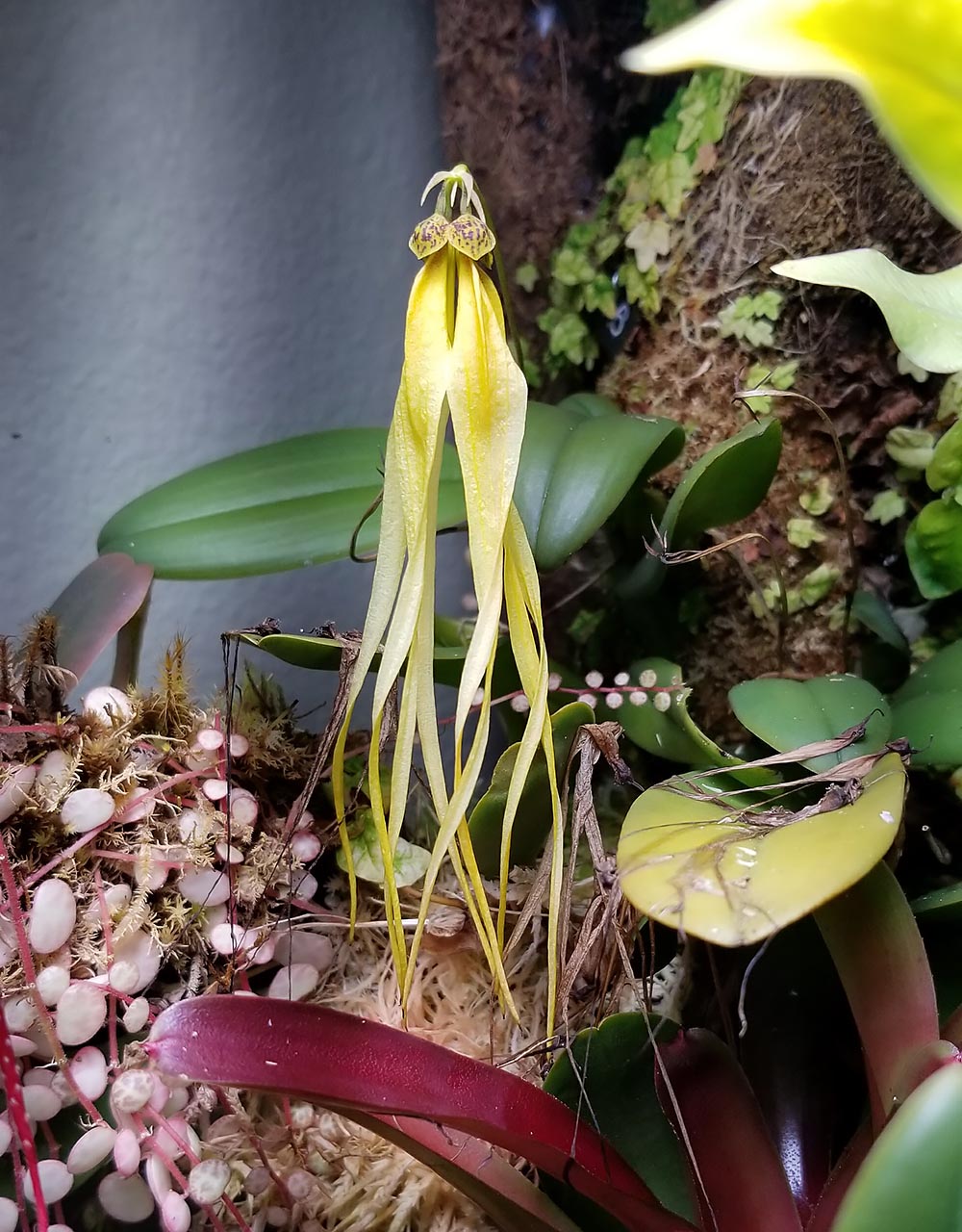
Bulbophyllum thiurum, demonstrating the long blooms that compliment the vertical arrangement of the vivarium.
MP: How did you pick your orchids for the vivarium?
AH: Well, I selected for flowers I like, but I researched size and light requirements. I tended to pick plants that produce long inflorescences with a fan of flowers, or long dangly flowers, because the space in this vivarium is so vertical. One I’m particularly excited for is Bulbophyllum pollicolosum. It’s a deciduous orchid, blooming with tiny silver flowers off the camouflaged bulbs during the orchid’s leafless stage.
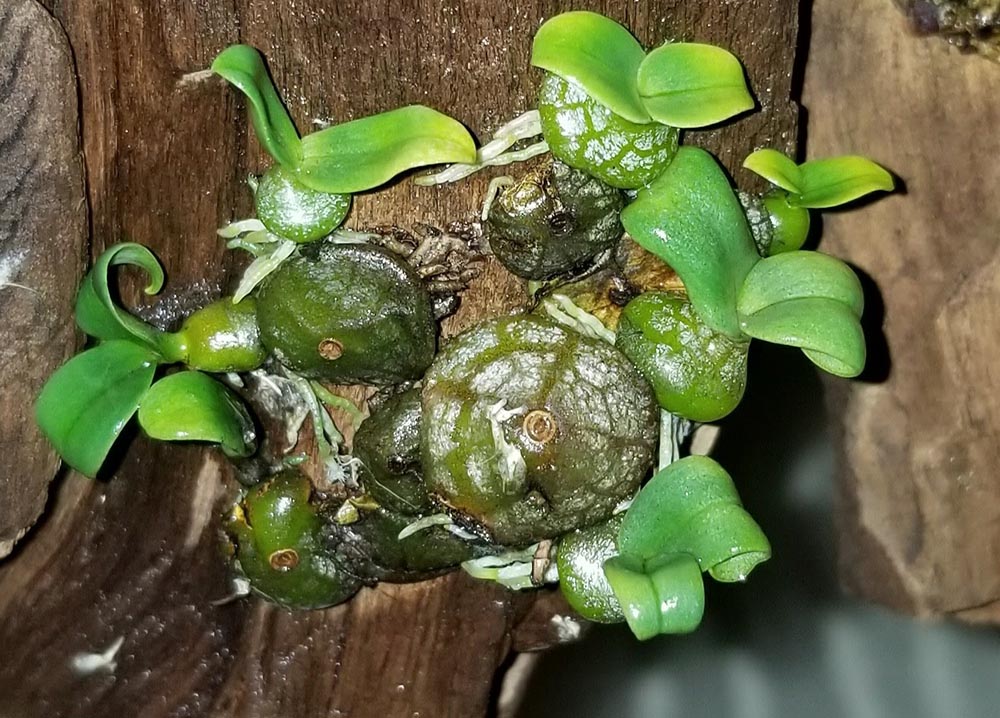
Bulbophyllum pollicolosum; when it drops these tiny leaves, they’ll be replaced by a tiny show of flowers!
(Ho also happens to be an aspiring AOS judge and an adept orchid breeder, doing his own orchid flasking. Orchids require lab sterility to culture, and Ho built his own laminar flow hood for lab work and learned the art of seed-sowing and flasking in this home lab setup.)
MP: I noticed all these tiny, somewhat inconspicuous numbers in the vivarium. It gives it a certain botanical garden–type feel. Can you explain these?
AH: I have a master spreadsheet for every single orchid I own. All of them have a specimen ID number. The physical plants have their name tag and ID tag . For the vivarium, they only have the ID tag number so that I can have a clean-looking system without giant white plant name tags sticking out everywhere. The look was inspired by museum specimen collections. I just used a simple labeler to create them; it’s just black tape with white print and jewelry pins to hold them in place.
MP: You have more than just orchids in the vivarium. What other plants are in there?
AH: My non-orchid plants include creeping plants such as Peperomia prostrata and Ficus pumila (Creeping Fig, both the regular and quincifolia form).
I have four or five different types of bromeliads. My favorite is Neoregelia “Fireball”; if you have the right lights they color up nicely. The other Neos were selections that stay small.
There are also a couple of foliage plants that add some different textures to the mix. One example is Peperomia cf. verschaffeltii, the Mini Watermelon Peperomia.
Continue to Part 3, and meet the animal inhabitants of this beautiful vivarium.
Learn more about keeping fishes and terrestrial life together in the January/February 2018 issue of AMAZONAS Magazine: PALUDARIUM PRIMER.

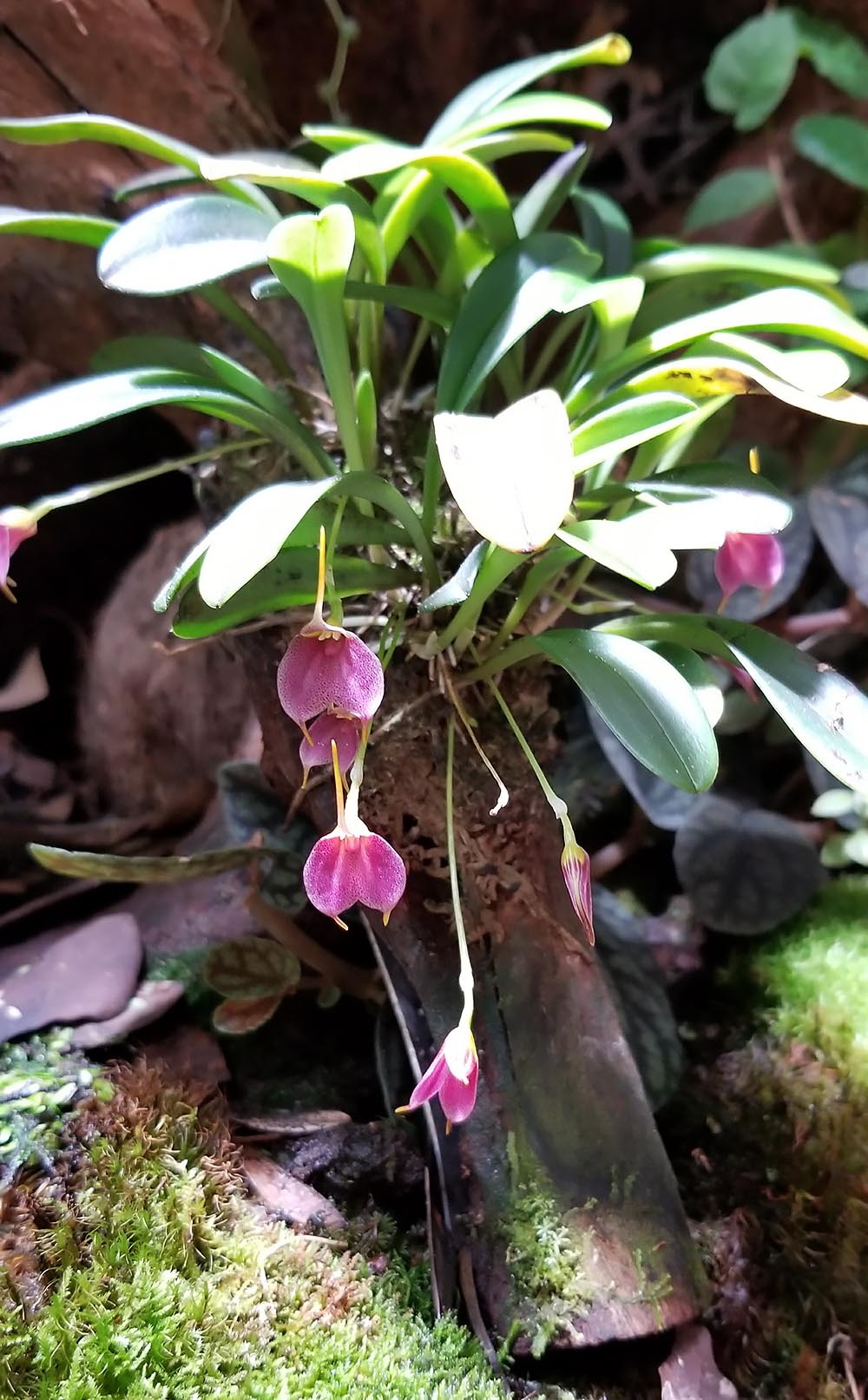
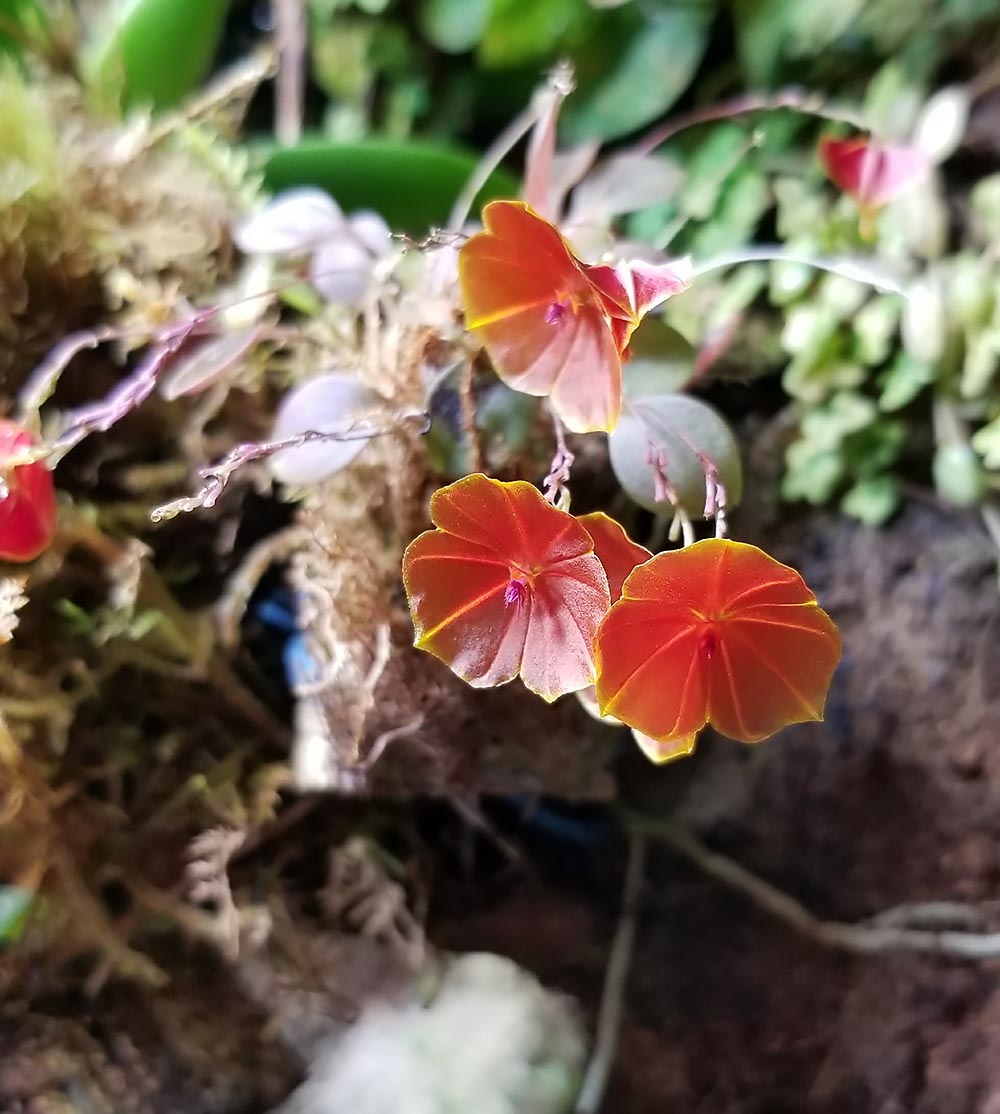
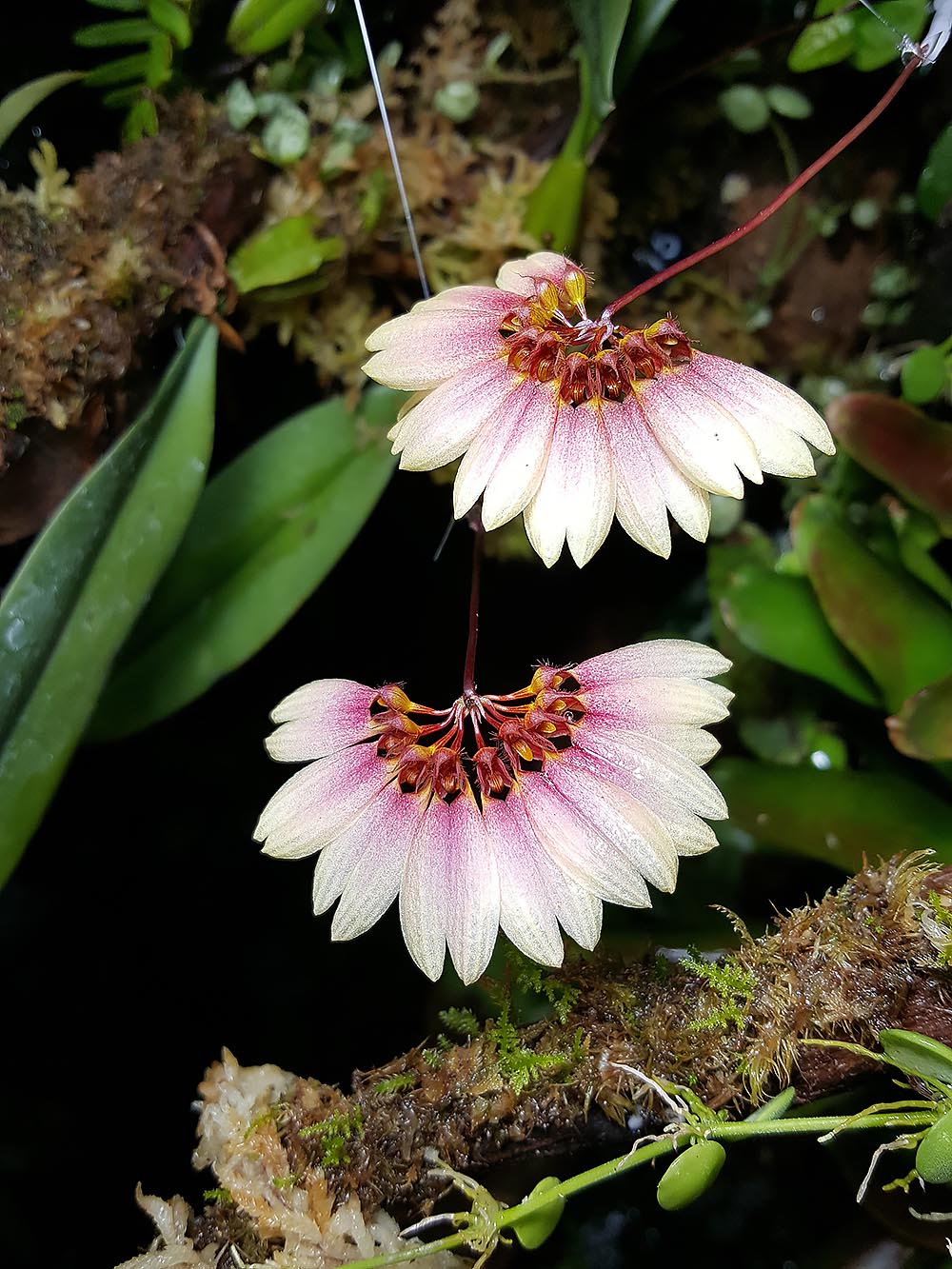
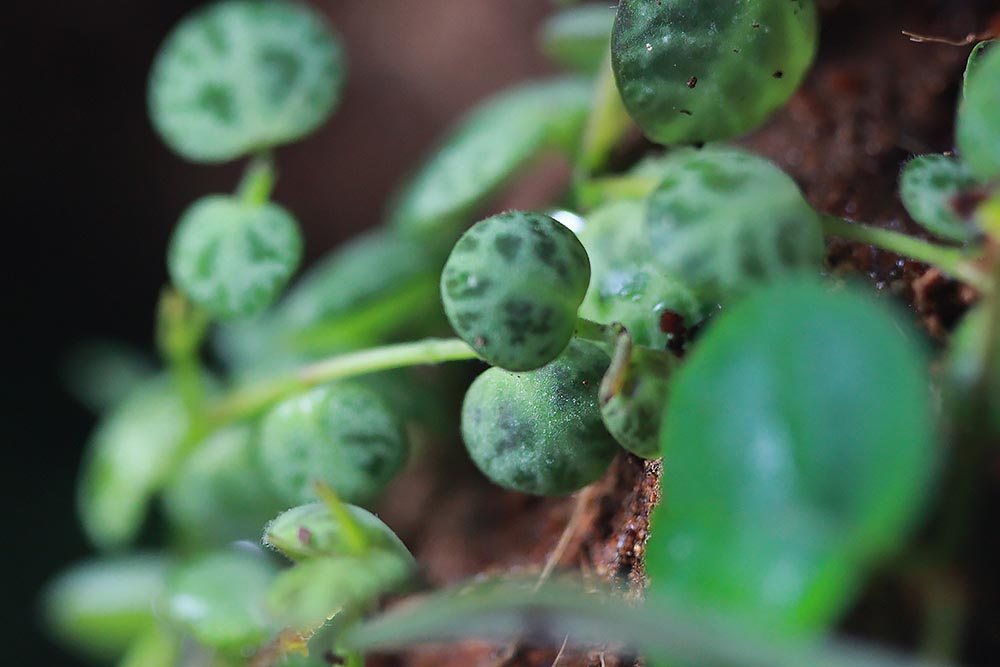
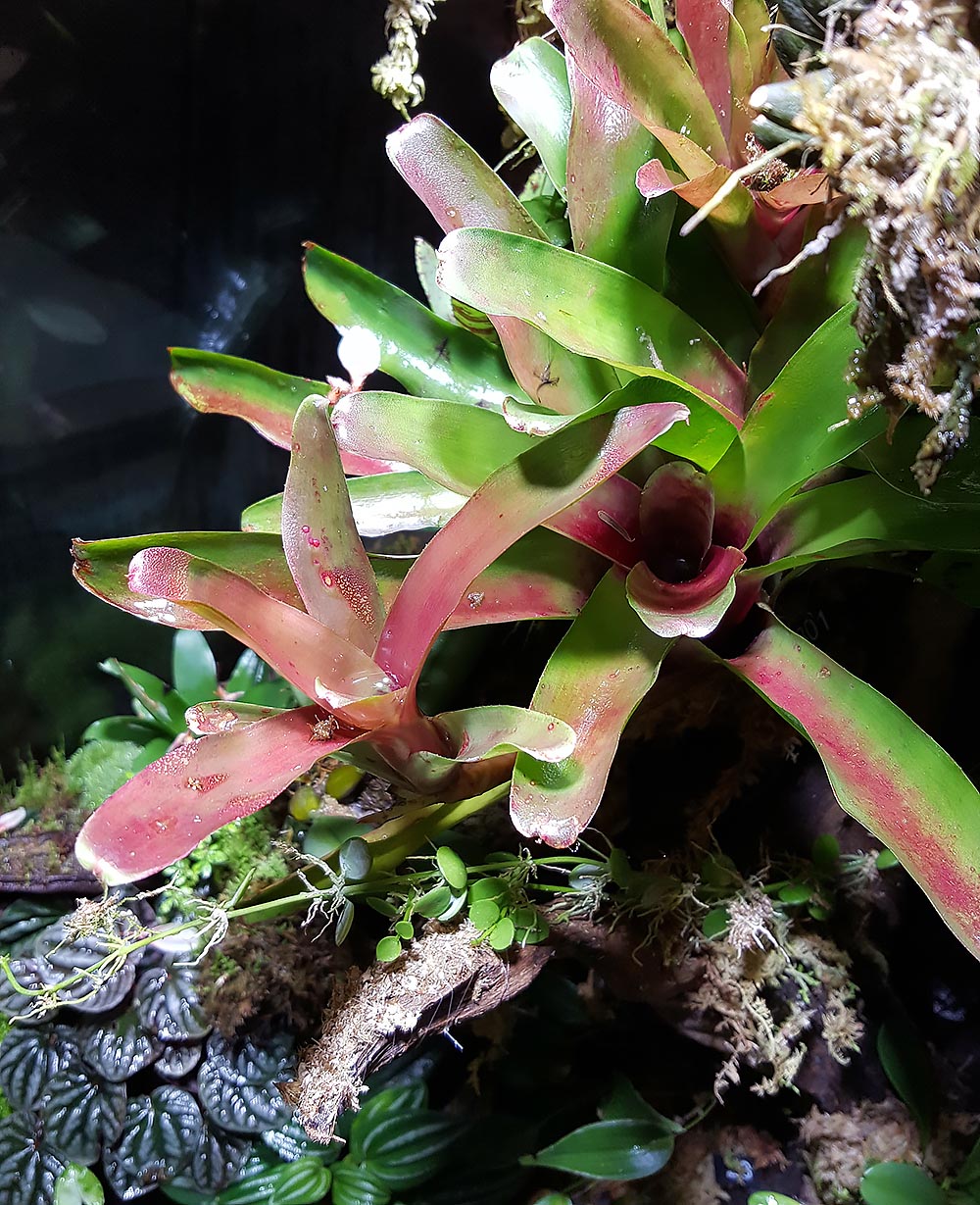
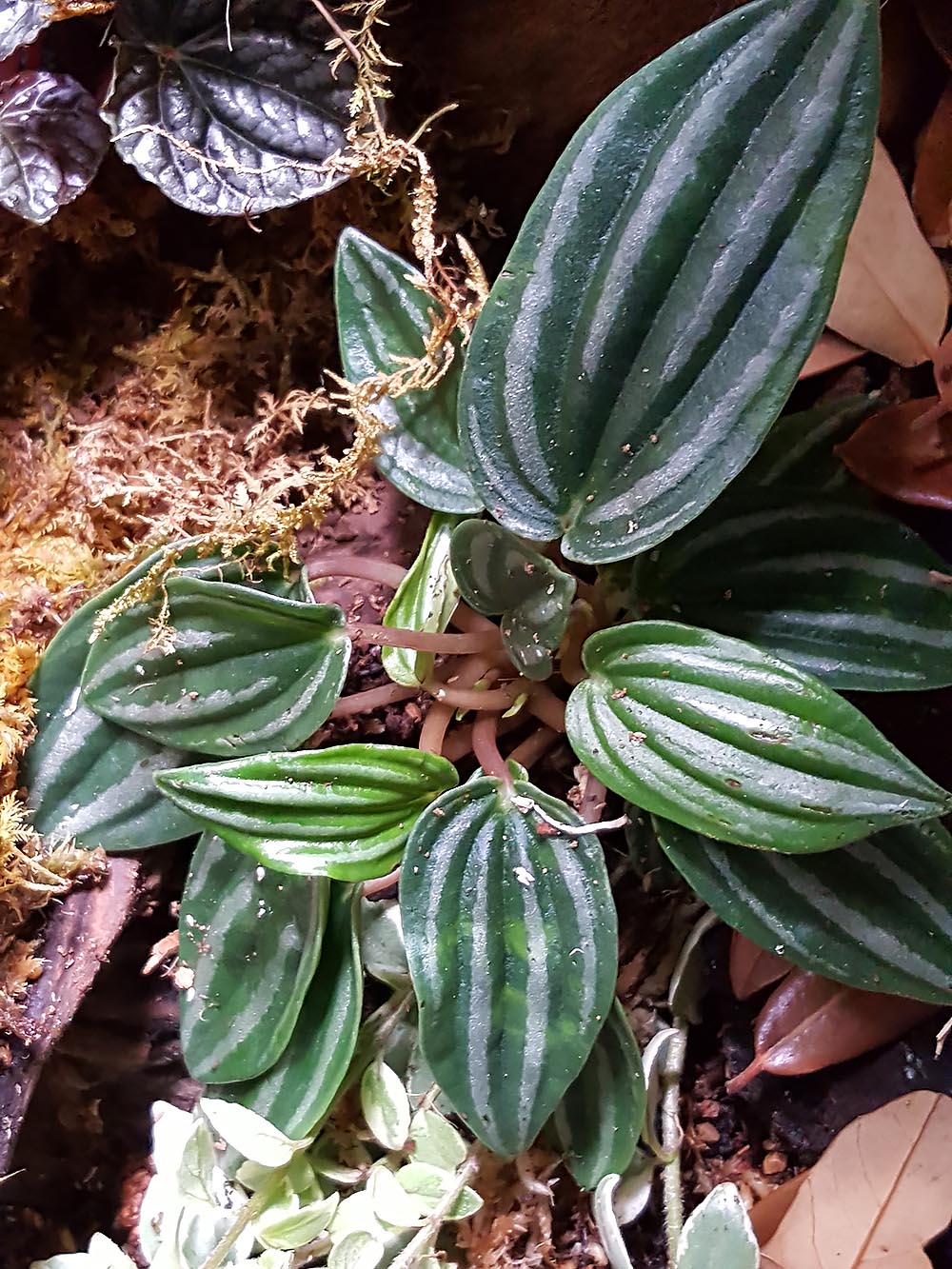





That was a great article! I’m also a former reefer who has transitioned my reef tank into FW planted tank and am just getting a dart frog tank setup. I really appreciate the detailed information about orchids appropriate for a vivarium–hasn’t been easy to find that.